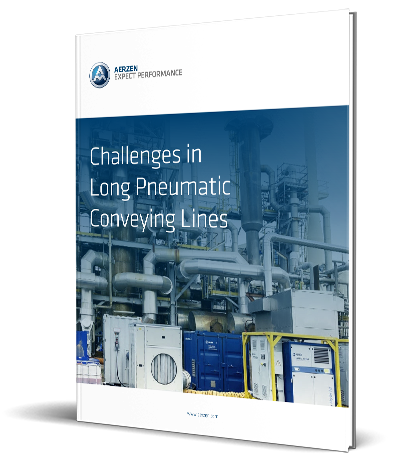Challenges in Long Pneumatic Conveying Lines

In many industries, mechanical conveying is seen as the ideal solution for transporting materials over distances greater than 1,000 feet. These applications have traditionally been considered too impractical for pneumatic equipment. Pneumatic conveying lines rely on blowers or vacuums to create a pressure system that pushes or pulls materials through a pipeline. Pneumatic equipment must be powerful enough to maintain sufficient pressure throughout the system.
However, mechanical conveyors are unsuitable for food processing and other applications that must avoid contamination. Not only are they challenging to sanitize, but they are also unsuitable for transporting very hot or cold materials.
Pneumatic conveying offers the ideal solution to these issues. Since these systems operate along a pipeline, materials are protected from contact with the outside environment and other contaminants. Materials can be safely transported at any angle. With the right blower, long-distance pneumatic conveying is certainly possible, as long as the materials being transported, pipe diameter, temperature, and blower motor size are all carefully considered.
In this guide, we’ll discuss some of the biggest challenges in long pneumatic conveying and how you can develop a system that’s powerful enough to meet your needs cost-effectively.

